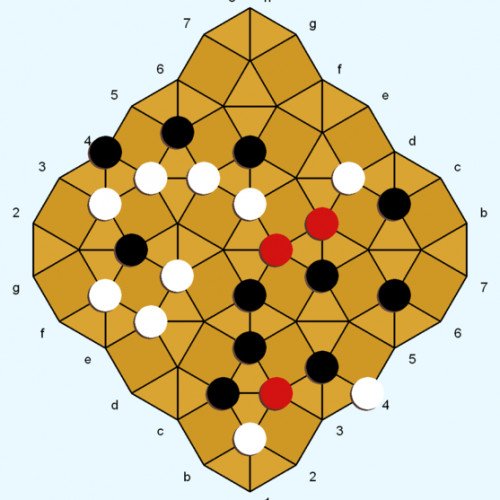CHATURANGA VS DIAMOND

CHATURANGA
Chaturanga (Sanskrit: चतुरङ्ग; caturaṅga), or catur for short, which means 'Four Divisions' (referring to ancient army divisions of infantry Pawn (chess), cavalry Knight (chess), elephantry Alfil (chess), and chariotry Rook (chess)), is an ancient Indian strategy game that is commonly theorized to be the common ancestor of the board games chess, xiangqi, shogi, sittuyin, and makruk. Chaturanga is first known from the Gupta Empire in India around the 6th century AD. In the 7th century, it was adopted as chatrang (shatranj) in Sassanid Persia, which in turn was the form of chess brought to late-medieval Europe. According to Stewart Culin, chaturanga was first described in the Hindu text Bhavishya Purana. The exact rules of chaturanga are unknown. Chess historians suppose that the game had similar rules to those of its successor, shatranj. In particular, there is uncertainty as to the moves of the Gaja (elephant). The origin of chaturanga has been a puzzle for centuries. It has its origins in the Gupta Empire, with the earliest clear reference dating from the sixth century of the common era, and from north India. The first substantial argument that chaturanga is much older than this is the fact that the chariot is the most powerful piece on the board, although chariots appear to have been obsolete in warfare for at least five or six centuries. The counter-argument is that they remained prominent in literature. Several more recent scholars have proposed a gradual evolution in the centuries B.C. in the northern or northwestern border areas of Indian culture, where it was in contact with Greek culture brought by the Macedonian-Greek army, and where some rulers issued coins with fused Greek-Indian imagery. Myron Samsin argues that chaturanga originated in the kingdom of Bactria, ca. 255–55 B.C., in a fusion of the many short-moving men of the Greek game petteia, or poleis, with men derived from the various moves of an Indian race game, perhaps Seega or Chaupur, on the ashtapada, the board of another race game.
Statistics for this Xoptio

DIAMOND
Diamond is a two-player abstract strategy board game invented by Larry Back. The invention was inspired by the game Kensington, which uses a similar board pattern and game objective. Rules for Diamond were conceived in 1985 and finalized in 1994. Diamond introduces a new board geometry and neutral pieces, with the aim of enhancing the game dynamic and lowering the potential for draws. Diamond was featured in the February 2013 issue of Games magazine. The Diamond gameboard consists of interlocking squares and triangles. White and Black each control 12 game pieces of their own color. Neutral pieces (red-colored in the diagrams) enter the game via captures. The pieces are played on the line intersections (called points, as in Go). White and black (but not red) pieces can move along straight lines to adjacent unoccupied points. A player wins by being the first to occupy all four corners (points) of a board square with their pieces. Capturing moves are possible in the Movement phase. If the points of a triangle contain exactly one white and one black piece, either player can capture the opponent piece by occupying the remaining open point ("cornering" the enemy piece on the triangle). The captured piece can be cornered on one triangle (see Example 1), or simultaneously cornered on two different triangles (Example 4). The captured piece is immediately removed from the game and replaced on its point by a neutral piece. If a move simultaneously corners two opponent pieces on two different triangles, then neither enemy piece is captured (Examples 2 and 3). A piece can move safely to a triangle point even if the other two points of the triangle are occupied by enemy pieces (Example 5).